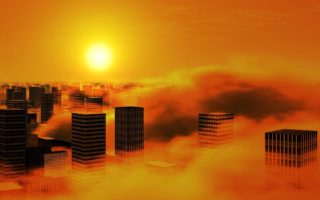
Air pollution is one of the most complex and most pressing problems facing industrialized nations today. Before the health issues that are associated with pollution can be addressed, though, better systems must be put in place for measuring and tracking it. Fortunately, a team at Sweden’s Chalmers University has developed a new generation of nanosensors that could provide effective, widespread pollution tracking. Here’s what you need to know about the latest development in the worldwide fight against air pollution.
What Makes the New Nanosensors Special?
These new sensors are notable for their combination of accuracy and size. According to the team at Chalmers University, the sensors are capable of taking extremely precise measurements of ambient pollution levels, allowing researchers to gain useful insights into the distribution of pollution and develop new strategies for combating it. Meanwhile, the sensors are quite small, with the entire apparatus fitting neatly onto a tiny chip.
By default, these sensors are designed to detect nitrogen dioxide, a key pollutant in car exhaust. However, the Swedish team has said that they can easily be adjusted to monitor other gases associated with air pollution, making them highly versatile.
How Can These Devices Be Deployed?
Thanks to the size of the sensors, they have immense potential for widespread deployment in cities. To begin with, the research team hopes to place sensors on city streetlights. Initial tests have already been conducted in Sweden, but wider use will give researchers access to more and better data. Eventually, the development team also hopes to integrate sensors into other pieces of public architecture.
While you likely won’t see one of these sensors on a streetlight in the United States anytime in the immediate future, the very fact that they have been developed represents a major step in combating air pollution. By carefully measuring and tracking pollution levels, cities, states and national governments can develop more effective plans for reducing pollution levels.